The film industry often invests significant time and money into marketing upcoming releases, aiming to create more than just a trip to the theater. Studios want to turn a movie release into a cultural event—something that sparks online debates, drives mass merchandise sales, and brings fans together. Over the years, some of the biggest movie

The film industry often invests significant time and money into marketing upcoming releases, aiming to create more than just a trip to the theater. Studios want to turn a movie release into a cultural event—something that sparks online debates, drives mass merchandise sales, and brings fans together. Over the years, some of the biggest movie marketing campaigns have used everything from traditional advertising to clever social media stunts, constantly redefining how films are promoted. Below, we explore some of the most memorable examples, from the birth of the summer blockbuster to the rise of viral campaigns. These campaigns show how creating hype can be just as important to a film’s success as the movie itself.
Whether it’s large budgets, digital illusions, or viral moments, these campaigns highlight the creative efforts behind major movie promotions and how they’ve changed our perception of film releases.
- Jaws (1975): The First Summer Blockbuster
Before Jaws, summer was a quiet time for Hollywood. But Universal Pictures broke the mold by spending a massive $2 million on national advertising—nearly matching the film’s production costs. Instead of rolling out the movie slowly in a few theaters, the studio saturated TV with shark-themed promos, sparking widespread curiosity. The excitement was fueled by TV ads, newspapers, and merchandise, creating a “must-see” buzz that was rare in the 1970s.
When Jaws hit over 400 theaters, the anticipation helped it break box office records, earning around $260 million domestically—unheard of at the time. Media outlets hailed it as the highest-grossing film ever, marking the beginning of the summer blockbuster era. This strategy set a new standard for Hollywood, with future franchises, including Star Wars, following the same approach: big spending, wide releases, and heavy marketing.
- The Blair Witch Project (1999): Viral Marketing Pioneer
By the late ’90s, the internet was becoming a mainstream tool, but few filmmakers knew how to harness its power. The Blair Witch Project changed that. Made on a budget of about $60,000, the film couldn’t afford traditional TV ads. Instead, its distributor created a website that teased “real” evidence of a witch in Maryland, complete with fake interviews and police reports. This strategy made people wonder if the footage was real, sparking online discussions and turning the film into a viral sensation.
This word-of-mouth marketing paid off, as people who believed they were watching real found footage rushed to theaters, helping the film gross $250 million worldwide. It was one of the first films to show how online buzz and unconventional marketing could create massive anticipation. The campaign inspired later films like Paranormal Activity and Cloverfield, which also used mysterious web campaigns to stir excitement.
- The Dark Knight (2008): Immersive ARG and Viral Hype
Christopher Nolan’s The Dark Knight is remembered for its gripping story and Heath Ledger’s portrayal of the Joker. But it’s also known for its groundbreaking marketing campaign, particularly the 15-month alternate reality game (ARG) called “Why So Serious?”. It started at Comic-Con 2007, where fans solved riddles across websites, bakery items, and even skywriting. Fans felt like they were part of the story, unlocking new footage and clues along the way.
This interactive campaign kept the film in the public eye long before its release, creating enormous anticipation. The film eventually broke records, earning $158 million in its opening weekend and over $1 billion globally. This campaign showed how immersive, puzzle-driven marketing could turn a superhero movie into a cultural event.
- Avatar (2009): Selling an Original IP Through Technological Marvel
James Cameron’s Avatar had a unique challenge: convincing audiences to care about an unfamiliar world on the planet Pandora. With a $150 million marketing budget, 20th Century Fox focused on showcasing the film’s groundbreaking 3D technology. Traditional ads emphasized the visual spectacle, while “Avatar Day” offered free IMAX previews, turning early viewers into ambassadors for the film.
The campaign framed Avatar as a must-see 3D experience, and it worked. Audiences flocked to theaters, pushing the film to earn over $2.8 billion worldwide, briefly making it the highest-grossing film ever. By emphasizing new technology and creating an unforgettable cinematic experience, the campaign helped turn a new IP into one of the biggest global brands in film.
- Star Wars: The Force Awakens (2015): Reviving a Legendary Franchise
When Disney revived Star Wars with The Force Awakens, the marketing began nearly a year before its release. Teaser trailers sparked millions of YouTube views, and merchandise appeared everywhere, from fast food chains to electronics stores. “Force Friday” kicked off the promotion with new toys, and stores transformed into Star Wars hubs.
The campaign cleverly mixed nostalgia for old fans with the introduction of new characters like Rey, Finn, and Kylo Ren, ensuring the movie appealed to both veterans and newcomers. This strategy led to the film grossing over $2 billion globally, showing the power of integrated marketing and cross-platform promotions in revitalizing an iconic franchise.
- Deadpool (2016): Low-Budget Humor Meets Viral Social Media
Deadpool had a relatively small marketing budget compared to other superhero films, but it broke through by embracing the character’s sarcastic humor. Ryan Reynolds led the charge with comedic billboards, holiday-themed sketches, and TV appearances where he stayed in character. The campaign’s irreverent tone made it stand out from other superhero flicks and resonated with adult audiences.
The marketing felt authentic, capturing the essence of the character and drawing fans in with memes and social media posts. Deadpool ended up grossing $647 million worldwide, proving that creativity and personality could turn a smaller-budget film into a box-office hit.
- Avengers: Endgame (2019): Culminating Hype on a Grand Scale
Avengers: Endgame was the culmination of over a decade of storytelling, and Marvel capitalized on that anticipation with an epic marketing campaign. The studio purposely withheld key plot details, turning every teaser and trailer into an event. Fans were encouraged to avoid spoilers, creating a global sense of urgency to see the film as soon as it was released.
The campaign worked wonders, with the film grossing $1.2 billion in its first five days and eventually surpassing $2 billion. This success demonstrated the power of emotional marketing and how carefully timed reveals and brand partnerships can turn a superhero film into a worldwide cultural phenomenon.
- Barbie (2023): Omnipresent Cross-Promotion and Meme Culture
Greta Gerwig’s Barbie embraced a pink-hued aesthetic and took it to every corner of retail, social media, and viral memes. Warner Bros. spent around $150 million on marketing, matching the film’s production costs. From Barbie-themed fast-food meals to a full-scale Airbnb Malibu Dreamhouse, no part of the consumer world was untouched by the pink invasion.
The campaign made the Barbie brand omnipresent, while social media exploded with “Barbenheimer” jokes comparing it to Oppenheimer. The film went on to gross over $1.4 billion globally, proving that meme culture and brand collaborations can create massive cultural moments.
- The Matrix (1999): Mysterious Themes and Mind-Bending Trailers
When The Matrix debuted, Warner Bros. used a minimalist approach to its marketing, relying on the cryptic “What is the Matrix?” slogan to pique curiosity. Trailers featured the iconic “bullet time” effect but gave little away about the film’s deeper philosophical themes, fueling rumors among sci-fi fans.
This sense of mystery made the film a must-see, leading to strong word-of-mouth and repeat viewings. Despite a modest advertising budget, the campaign’s enigmatic tone helped turn The Matrix into a cultural touchstone.
- Smile (2022): Creepy Viral Gimmicks for a Low-Budget Horror
Smile took a low-budget approach but achieved viral success through eerie, real-world stunts. Actors were placed in the background of televised events, sporting unsettling grins. These creepy moments quickly spread across social media, building intrigue without the need for traditional advertising.
The campaign’s unsettling nature generated buzz, and Smile exceeded box-office expectations, showing how a simple, creepy gimmick can capture widespread attention, even with a small marketing budget.
The Lasting Influence of Innovative Movie Marketing
From Jaws’ groundbreaking summer blockbuster strategy to Barbie’s viral meme culture, these campaigns demonstrate how innovative marketing can turn a movie release into a cultural phenomenon. Whether through massive budgets or clever viral tricks, these films prove that creating anticipation and excitement is just as important as the movie itself. By tapping into curiosity, emotion, and event-style hype, these campaigns have set the stage for what a film release can become—an unforgettable cultural event.

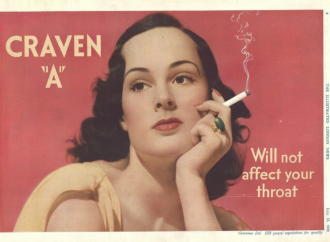



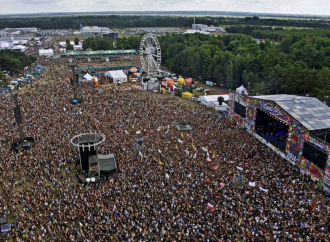
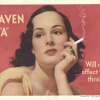








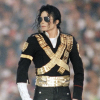
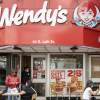
Leave a Comment
Your email address will not be published. Required fields are marked with *